This just in. Google now uses a machine-learning Artificial Intelligence that filters – and ranks – “a very large fraction” of queries. They’re calling it “RankBrain.”
In plain English, this means that Google can better understand what and why someone searches, and then rank the best-fit search result accordingly.
According to a Bloomberg interview with a senior research scientist at Google:
“RankBrain has become the third-most important signal contributing to the result of a search query.”
So what does this mean for your website’s ranking? For starters, search engine marketing just got a hell of a lot more complicated.
A Brief History of SEO
Once upon a time, in a vast and majestic land called the Internet, there lived White Hat and Black Hat SEOs. While the Black Hat SEOs were a bit shady, they lived peacefully with White Hats, joined together by their quest to discover Google’s algorithm and rank #1 in search results.
But then everything changed. Tired of being outsmarted and annoyed by all the Black Hat SEO scams, Google updated their search algorithm to be smarter and more spam-resistant, implementing different rules and guidelines for websites to follow.
If SEOs didn’t comply with these laws, their sites would be banished to the dark depths of Page 10.
Google’s Latest Algorithm: Changing the Face of SEO
By creating a smarter ranking system, Google didn’t just update its algorithm; it changed an entire industry.
Website quality and brand engagement are do-or-die. Not only must SEOs work harder to create user-centric digital experiences, but now brands must also up their game to support SEO efforts.
As a result, SEO is no longer a one-and done, siloed service. Instead, it is a process present in all aspects of the Web, from website planning and development to ongoing digital marketing efforts.
A Closer Look at How the Algorithm Works (or Why SEO Is More Than Just Keywords)
With stricter Web guidelines and a machine-learning AI, SEO became less cut-and-dry. You can’t just plop keywords on the page and in your meta data and expect #1 search rankings. We’re not making instant Ramen here, folks.
Google’s algorithms are now more effective at serving the most relevant search result based on:
The user’s search query
The user’s location
The day and time the user searched
The user’s device
The user’s browsing history
Notice how all the above items are user-centric? That’s because Google’s ultimate goal is providing the best search experience for the end user.
Let’s go through some examples of the algorithm in action.
Search query: “restaurant” on an iPhone at 10:16AM at the office
Result: Nearby spots that will be open by lunchtime.
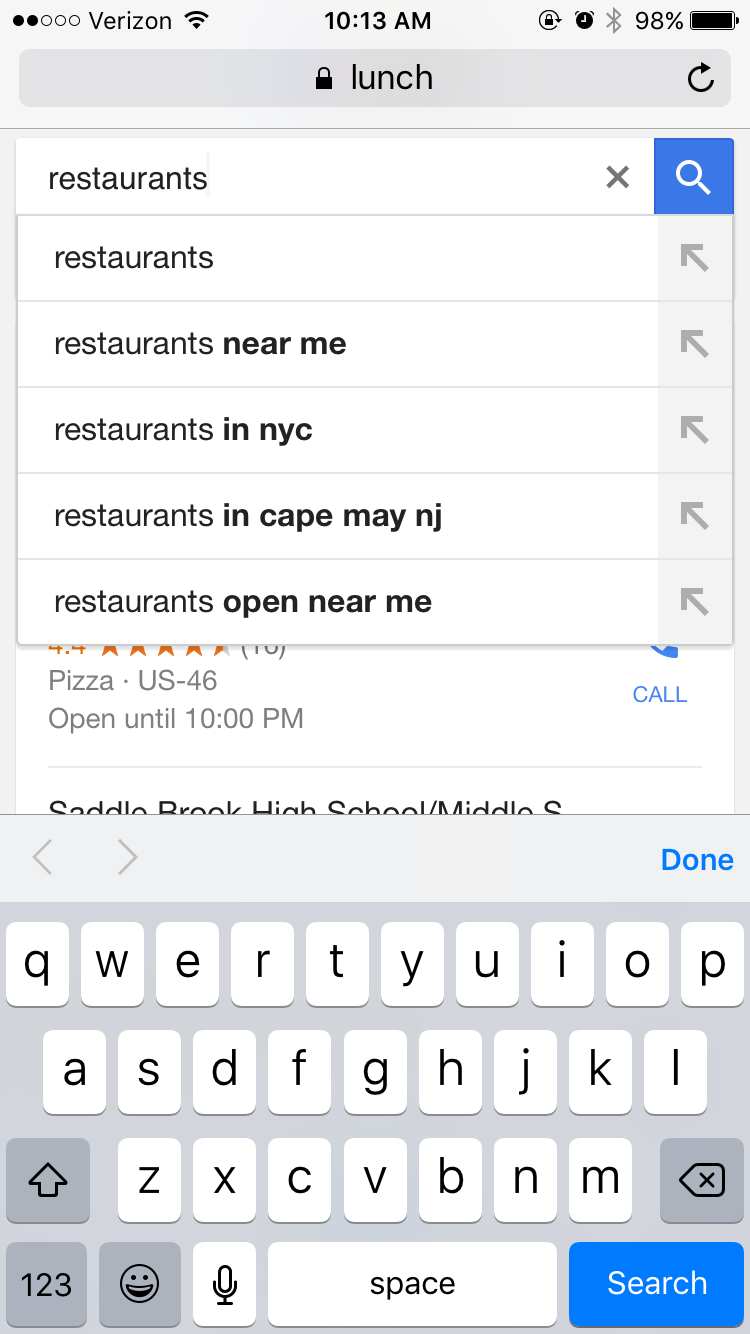
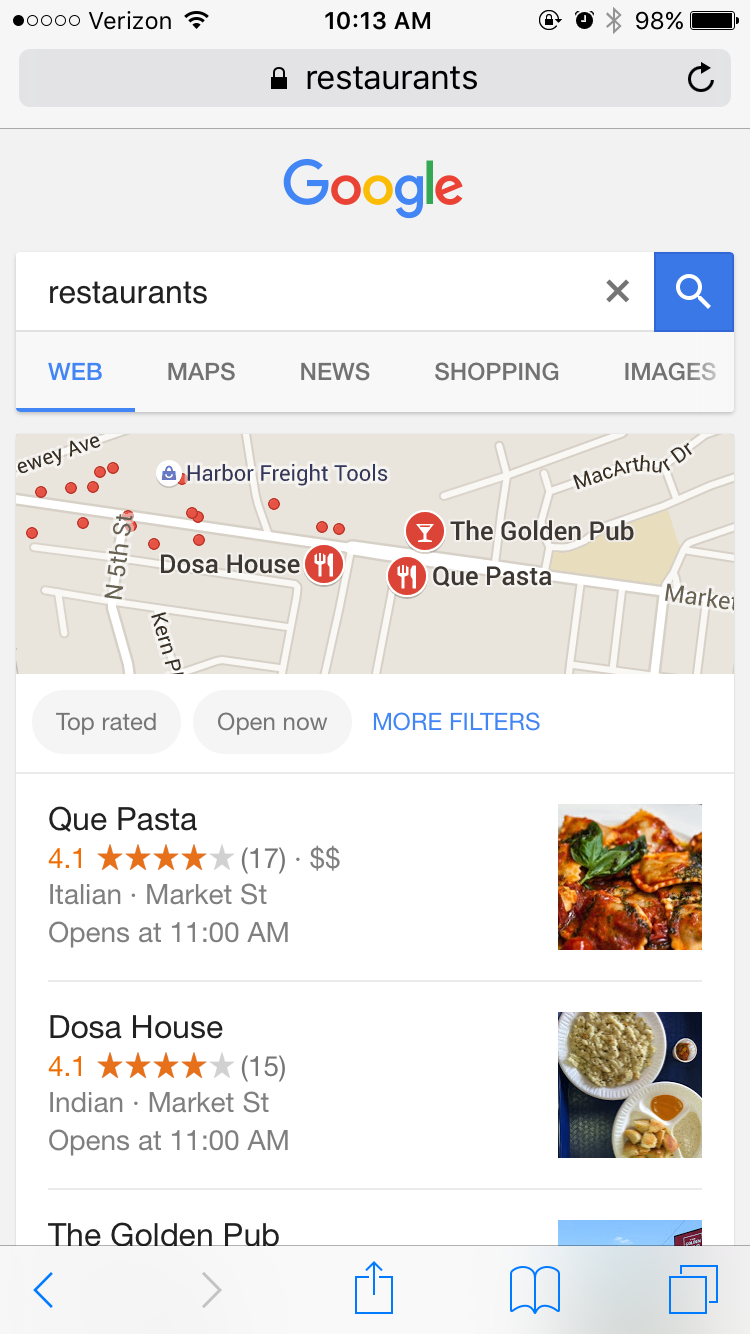
Search query: “how to fly a kite” on desktop
Result: A quick how-to snippet at the top and video explanations further down
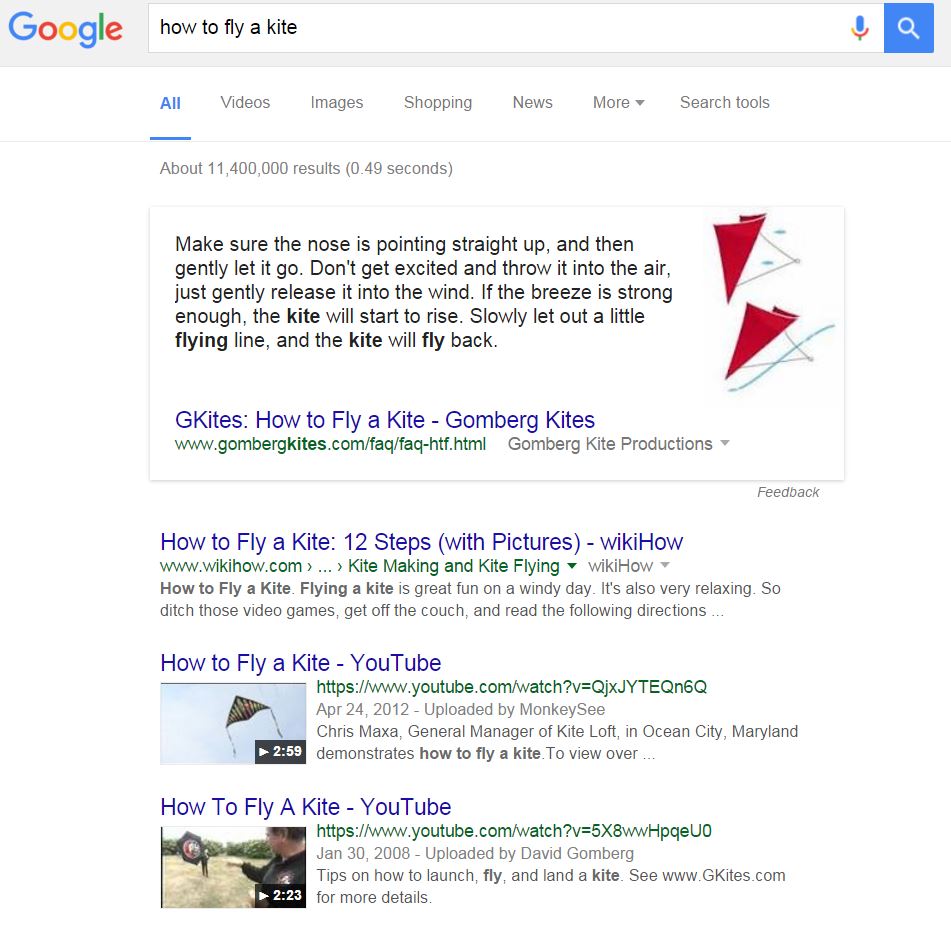
Search query: Football schedule on desktop on a Wednesday
Result: This week’s schedule and past football scores
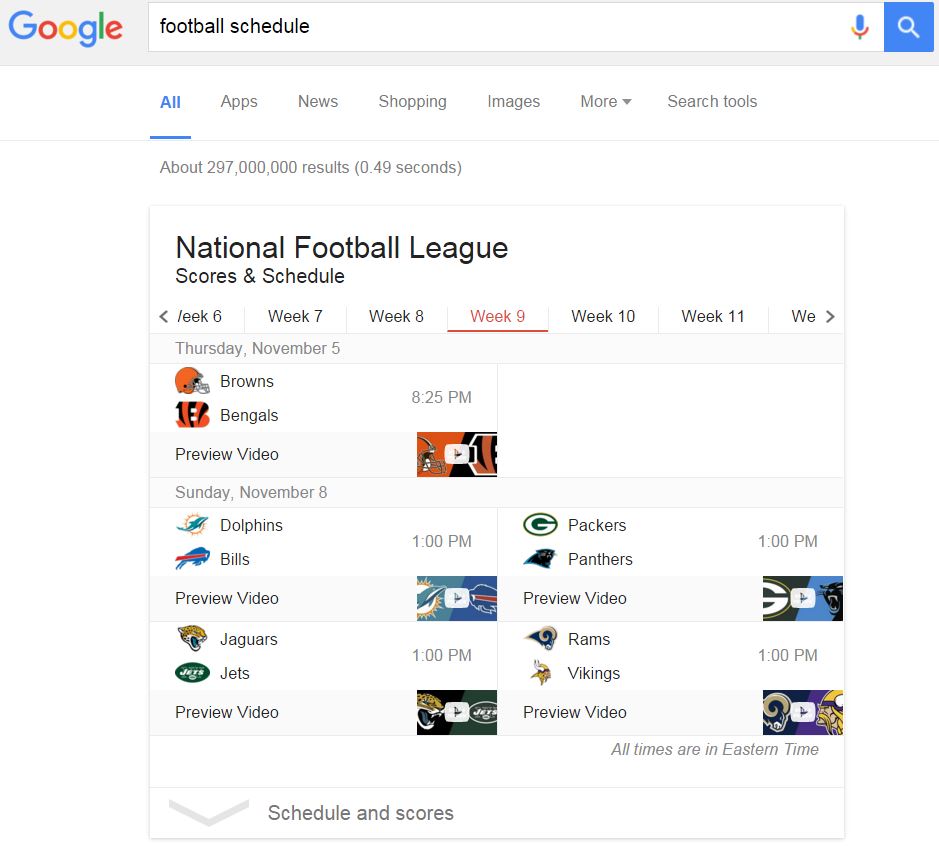
Search query: Apple on desktop at 10:35AM
Result: The Apple website, a Knowledge Graph panel, latest Apple news, and nearby Apple stores

Search query: that movie where the guy sings in socks
Result: The right movie AND videos of the scene I was thinking of
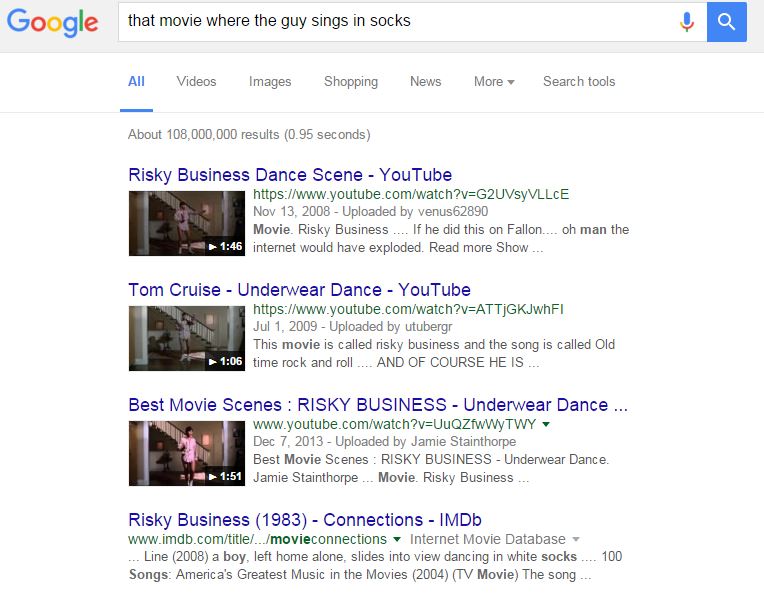
Ok, what did we learn from this exercise?
In all the above searches, Google gave me the right result in the format that I wanted it without having the exact query in the search results. Consider how powerful this is. Even in the last example, Google was able to provide the right result from my conversational and somewhat vague query.
This means:
Conversational and voice searches are on the rise.
Micromoments (how, why, what and where we search) will determine search results listings.
Different content forms (blog, video, social posts, Web content, etc) must be strategically created based on user research and media preferences.
Don’t think keywords. Think goals.
Based on the above examples, it’s clear that Google differentiates search queries and then makes the best guess on what type of results the user wants to see.
This means that it’s not about single keywords anymore. It’s a more holistic approach to search – one that considers the many any varying online users.
SEO thus requires a little more finesse than your traditional keyword research.
Making the Shift to User-First SEO
If Google’s algorithm updates aim to improve the user’s search experience, then it stands to reason that your SEO strategy must optimize your users’ entire Web experience.
This means defining who your users are, understanding their needs and pain points, providing answers to their problems, and adding value to their lives.
How do you do this?
Well, you have to get into the heads of your users and consider the following:
How they talk (do they say film or movie? Food or cuisine?)
How they feel (are they stressed at the time of search? Are they looking for a laugh?)
What their motivations are (are they searching for business or for pleasure?)
Their context (are they searching in the office or, at home, or on-the-go?)
Then you have to optimize your online presence based on your user research, all with the goal of helping your users complete their task as quickly and efficiently as possible. This can include the following tasks:
Website design or content changes to reduce bounce rate and increase time on site
Speeding up page load time
Getting more customer reviews
Creating quality, user-centric content
Growing brand reach and engagement (on-site and off-site)
Multi-device user experience
Increasing click-through rates from search
So you see, modern (and successful) SEO strategies don’t just optimize for traditional ranking inputs. It must also optimize for users’ task completion success.
Thus, the goal of modern SEO is not about ranking for a particular keyword. It’s about fulfilling your users’ task – whether that’s on your website, on social, or another digital medium altogether.
That’s why SEO can’t exist in a silo. Because for a truly successful SEO campaign, you must optimize your entire digital presence around your users.